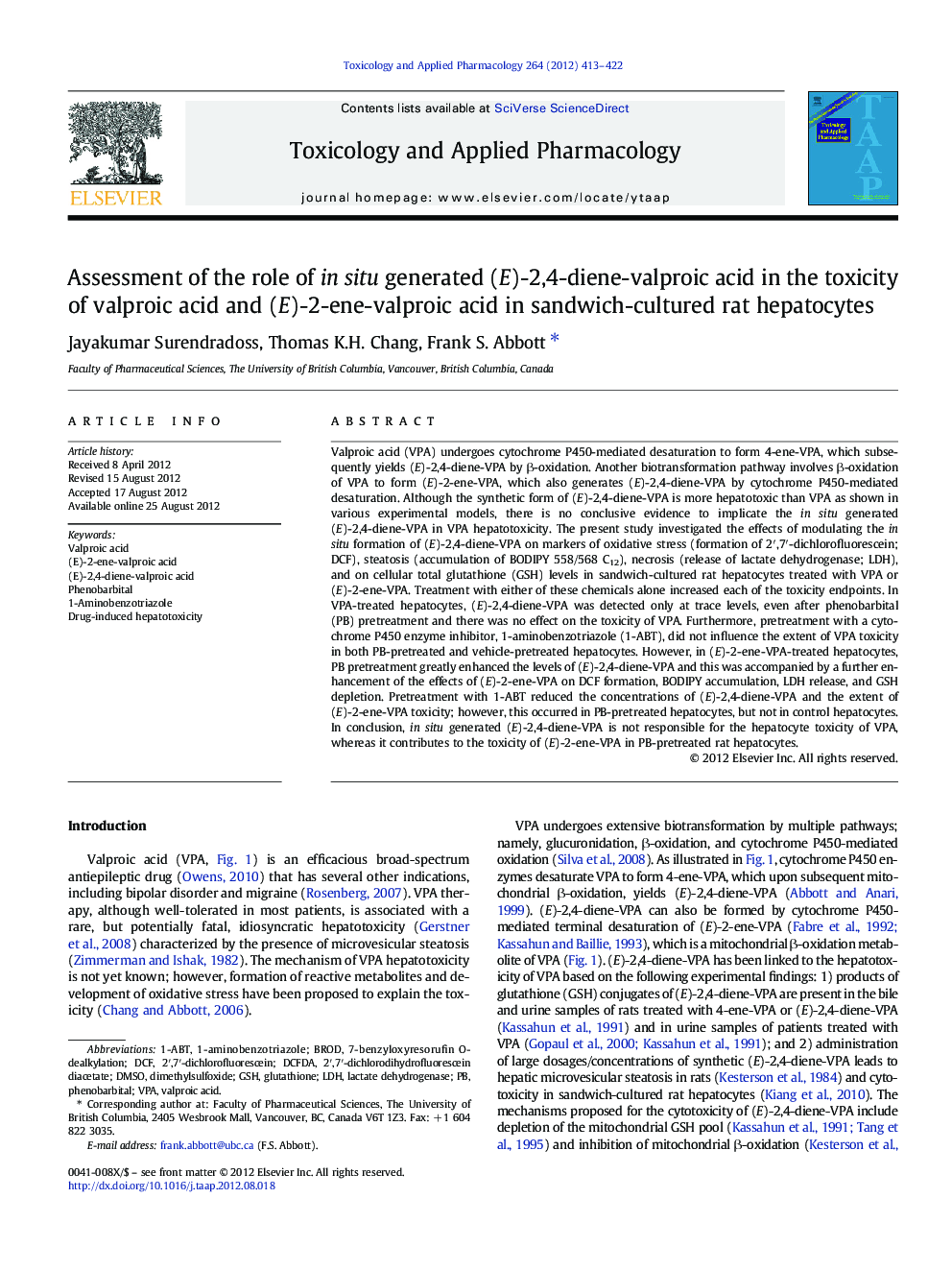| کد مقاله | کد نشریه | سال انتشار | مقاله انگلیسی | نسخه تمام متن |
|---|---|---|---|---|
| 2568887 | 1128494 | 2012 | 10 صفحه PDF | دانلود رایگان |

Valproic acid (VPA) undergoes cytochrome P450-mediated desaturation to form 4-ene-VPA, which subsequently yields (E)-2,4-diene-VPA by β-oxidation. Another biotransformation pathway involves β-oxidation of VPA to form (E)-2-ene-VPA, which also generates (E)-2,4-diene-VPA by cytochrome P450-mediated desaturation. Although the synthetic form of (E)-2,4-diene-VPA is more hepatotoxic than VPA as shown in various experimental models, there is no conclusive evidence to implicate the in situ generated (E)-2,4-diene-VPA in VPA hepatotoxicity. The present study investigated the effects of modulating the in situ formation of (E)-2,4-diene-VPA on markers of oxidative stress (formation of 2′,7′-dichlorofluorescein; DCF), steatosis (accumulation of BODIPY 558/568 C12), necrosis (release of lactate dehydrogenase; LDH), and on cellular total glutathione (GSH) levels in sandwich-cultured rat hepatocytes treated with VPA or (E)-2-ene-VPA. Treatment with either of these chemicals alone increased each of the toxicity endpoints. In VPA-treated hepatocytes, (E)-2,4-diene-VPA was detected only at trace levels, even after phenobarbital (PB) pretreatment and there was no effect on the toxicity of VPA. Furthermore, pretreatment with a cytochrome P450 enzyme inhibitor, 1-aminobenzotriazole (1-ABT), did not influence the extent of VPA toxicity in both PB-pretreated and vehicle-pretreated hepatocytes. However, in (E)-2-ene-VPA-treated hepatocytes, PB pretreatment greatly enhanced the levels of (E)-2,4-diene-VPA and this was accompanied by a further enhancement of the effects of (E)-2-ene-VPA on DCF formation, BODIPY accumulation, LDH release, and GSH depletion. Pretreatment with 1-ABT reduced the concentrations of (E)-2,4-diene-VPA and the extent of (E)-2-ene-VPA toxicity; however, this occurred in PB-pretreated hepatocytes, but not in control hepatocytes. In conclusion, in situ generated (E)-2,4-diene-VPA is not responsible for the hepatocyte toxicity of VPA, whereas it contributes to the toxicity of (E)-2-ene-VPA in PB-pretreated rat hepatocytes.
► (E)-2,4-diene-valproic acid is a reactive and toxic metabolite of valproic acid (VPA).
► In situ, this metabolite is not responsible for VPA toxicity in rat hepatocytes.
► This metabolite enhances (E)-2-ene-VPA toxicity in PB-pretreated hepatocytes.
Journal: Toxicology and Applied Pharmacology - Volume 264, Issue 3, 1 November 2012, Pages 413–422